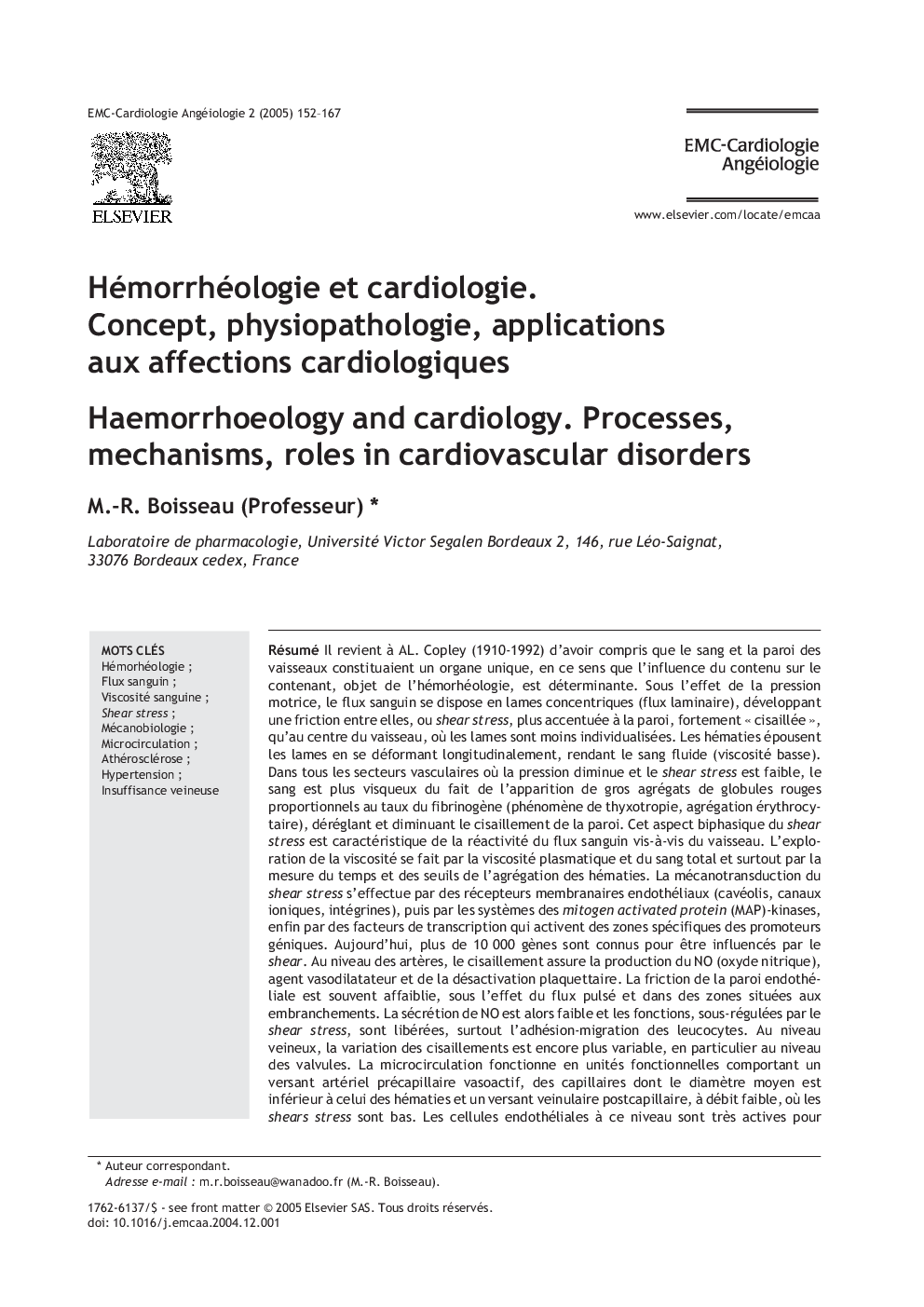| کد مقاله | کد نشریه | سال انتشار | مقاله انگلیسی | نسخه تمام متن |
|---|---|---|---|---|
| 9167443 | 1175208 | 2005 | 16 صفحه PDF | دانلود رایگان |
عنوان انگلیسی مقاله ISI
Hémorrhéologie et cardiologie. Concept, physiopathologie, applications aux affections cardiologiques
دانلود مقاله + سفارش ترجمه
دانلود مقاله ISI انگلیسی
رایگان برای ایرانیان
کلمات کلیدی
Atherosclerosis - آترواسکلروز(تصلب شریان)Athérosclérose - تصلب شریانShear stress - تنش برشیMicrocirculation - ریز جریانHypertension - فشار خون بالاMechanobiology - مکانوبیولوژیvenous insufficiency - نارسایی وریدیinsuffisance veineuse - نارسایی وریدیBlood viscosity - ویسکوزیته خونBlood flow - گردش خون
موضوعات مرتبط
علوم پزشکی و سلامت
پزشکی و دندانپزشکی
کاردیولوژی و پزشکی قلب و عروق
پیش نمایش صفحه اول مقاله

چکیده انگلیسی
The discovery that the blood and the vessel wall constitute a single organ, i.e., that the content definitely influences the container - which is the main object of the haemorrheology - is attributable to A.L. Copley (1910-1992). Due to driving forces, blood flow organizes itself as concentric layers (laminar flow) shearing over each other. Such a shear stress is stronger at the wall level than in the middle of the vessel, where layers are less distinct. Red cells deform and take the shape of layers, allowing blood to become fluid (low viscosity). In vascular areas with decreased pressure, thus lower shear stress, blood becomes more viscous due to the presence of huge red cell aggregates, in relation to fibrinogen level (thyxotropy, red cell aggregation), changing and decreasing the shearing at the wall level. Such a two-phase behaviour of the shear stress characterizes the blood flow reactivity toward the wall. As viscosity measurement consists of plasma and blood viscosity, time and threshold of erythrocyte aggregation appear more accurate determinants. The shear stress mechanotransduction involves endothelial membrane receptors (caveoli, ion channels, integrins), then MAP-kinases systems, and finally transcription factors able to bind specific areas in gene promoters. Over 10 000 shear-sensitive genes have been identified to date. In arteries the shear stress induces NO, which is vasoactive and inhibits platelets. The shearing power at the wall level or at branching zones is often poor, due to pulsations and picks, where subsequently NO production is low and shear-down-regulated functions can occur, mainly leukocyte adhesion and migration. In veins changes in shear are more frequent, particularly in valvulae. Microcirculation is implemented as functional units, exhibiting a vasoactive precapillary side, capillaries with diameters lower than those of red cells and a post-capillary venous side with low output and much decreased shear stress. Endothelial cells are here very active for leukocyte adhesion, inflammation and haemostasis as well. Atherosclerosis stems from zones where monocytes-macrophages are able to enter the wall, bearing large amounts of lipoproteins, the main plaque constituent. As risk factors increase fibrinogen, high red cell aggregates change the wall shear stress and then LDL-receptors can be activated allowing plaques to grow up and extend along the arterial trunks. The atherosclerosis plaque is submitted to high shear upwardly, that activates platelets, but exhibits a stagnant zone downward, where leucocytes adhere and migrate. Myocardial infarct is due to the rupture of a coronary plaque, but its size is related to the rheological factors (fibrinogen, viscosity). Occlusive arterial disease largely exhibits such rheological disorders, with subsequent actions on ischemia. Hemodilution is proposed during acute events, mainly in stroke. Flow restoration (bypass), prevention of risk factors, venous contention and venoactive drugs reduce the influence of rheological disorders in vascular diseases.
ناشر
Database: Elsevier - ScienceDirect (ساینس دایرکت)
Journal: EMC - Cardiologie-Angéiologie - Volume 2, Issue 2, May 2005, Pages 152-167
Journal: EMC - Cardiologie-Angéiologie - Volume 2, Issue 2, May 2005, Pages 152-167
نویسندگان
M.-R. (Professeur),